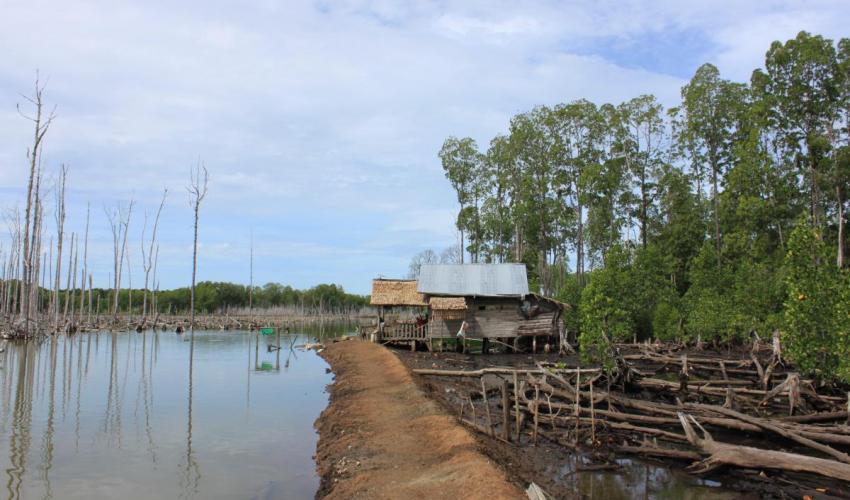Wildlife Conservation Society Indonesian Mangrove Initiatives
In the provinces of North Maluku, North Sulawesi, West Nusa Tenggara, and Aceh
Indonesia has more than 20% of the world’s mangrove area, totaling 3.2 million hectares. It also boasts the highest richness of mangrove species. They are recognized by the Indonesian government as a natural buffer and a cost-effective measure to protect coastal areas and villages.
However, a large proportion of Indonesia’s coastline is vulnerable to tsunamis and sea level rise and there is a growing body of literature showing that mangroves in Indonesia have been significantly degraded. Threats include shrimp aquaculture, coastal development, natural disasters, and timber and plantation development, which could result in a future loss across Indonesia of 763,000 ha (Ilman et al. 2016). The Minister of Environment and Forestry recently attended a mangrove replanting project in Java and acknowledged that 52% of Indonesian mangroves are in “bad condition”.

Dead mangroves along a fishpond in Tanjung Panjang, Gorontalo Province, Sulawesi Island, Indonesia. (Credit: IUCN)
Wildlife Conservation Society-Indonesia has major marine conservation initiatives in North Maluku, North Sulawesi, and West Nusa Tenggara provinces, with smaller-scale activities in Aceh. There is very little known about mangroves in North Maluku province with the exception of Geospatial Information Agency data indicating that mangroves are spread throughout the coastlines of the province.
West Nusa Tenggara has sparse mangroves, mostly deep within various bays, including two WCS priority sites, Saleh Bay and Campi Bay.
North Sulawesi has well-developed mangrove forests along many parts of the coastline. WCS has a priority site at the northern tip of the island in North Minahasa district, with extensive mangrove forests.
In Aceh, WCS is currently focusing on strengthening the centuries-old Panglima Laot traditional management system, which empowers a community-selected fisherman to oversee and enforce the local system of customary fishing rules and regulations.
FUTURE WORK
WCS would like to better integrate mangroves into our community-focused MPA and fisheries conservation initiatives in Indonesia. Future initiatives center around working with local communities to replant and restore mangrove forests, develop management plans for mud crab fisheries, and extend user-rights to communities in the North Minahasa District MPA in North Sulawesi. There is also potential to develop mangrove tourism packages for the existing tourism infrastructure in the province.
We also hope to work with communities to restore juvenile habitat of commercially-important fish species by replanting mangroves in appropriate areas, thus building greater capacity for ecosystem-based management of fisheries and MPAs in West Nusa Tenggara.
In addition, local mangroves provide an excellent entry point for working with youth groups and women’s groups, which aligns closely with government policies of community management for mangrove forests.
See more WCS mangrove initiatives.
Sources: